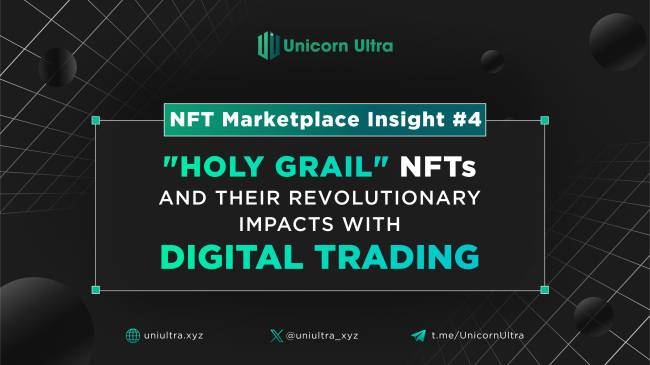This Insight will delve into the world of NFTs, exploring their distinct characteristics, differentiating factors from traditional digital commodities, and the revolutionary promise they hold for digital trading.

A 1st look
Imagine a world where digital creations, from art to music, have a distinct identity, ownership rights, and value, akin to physical masterpieces. This is the realm of NFTs. Unlike conventional digital assets, NFTs are unique or limited in quantity. Each NFT has a unique identifier, recorded on a blockchain, which distinguishes it from other tokens and verifies its authenticity and ownership. This uniqueness resembles owning an original painting, while countless others might own prints.
Three Pillars of a NFTs "Temple"
Suppose each NFT is a temple, it must have three crucial pillars that construct its perfective: non-fungibility, indivisibility, and programmable.
The primary pillar that sets NFTs apart is their non-fungibility. While traditional digital commodities like cryptocurrencies are interchangeable (one Bitcoin is always equal to another), each NFT is distinct. This distinctiveness allows for the tokenization of specific assets, digital or otherwise, with clear proof of ownership and history of transactions.
Another key aspect of NFTs is their indivisibility. Unlike cryptocurrencies, which can be divided into smaller units, NFTs exist as whole items. You cannot own a fraction of a digital artwork NFT; you either own it entirely or not at all.
Furthermore, NFTs are programmable. Many contain smart contracts that may include terms like royalty payments to the original creator upon resale. This opens up new economic models for creators and artists, who traditionally have limited control over their work once sold.
Frontier Between NFTs and Traditional Digital Commodities
The leap from traditional digital assets to NFTs is significant. Traditional digital commodities, be they domain names or virtual items in games, have long existed. However, they often needed a robust system to prove ownership and authenticity. NFTs, anchored in blockchain technology, bring reliability and transparency to digital ownership. This technology ensures that the record of ownership and transaction history of each NFT is tamper-proof and publicly verifiable.
The Revolutionary Promise of NFTs in Digital Trading
NFTs are not just a new kind of digital asset; they are pioneering a new economy. In the world of art and collectibles, NFTs have already shown their potential. They democratize art by providing a platform for artists to reach global audiences directly, bypassing traditional gatekeepers like galleries. This direct-to-consumer model also ensures that artists can earn more from their work, with smart contracts enabling ongoing revenue through resale royalties.
In the realm of digital trading, NFTs introduce the concept of provenance and scarcity, previously difficult to establish in the digital domain. They allow for the creation of digital collectibles that can accrue value over time, much like rare physical collectibles.
Moreover, NFTs have applications beyond art. They have the potential to revolutionize industries like real estate (tokenizing property), gaming (unique in-game items), and even identity verification (digital passports). This versatility opens up countless opportunities for new business models and creative expression.
However, the journey of NFTs is not without challenges. Issues like high energy consumption of blockchain networks, market volatility, and regulatory uncertainties pose significant hurdles. Additionally, the novelty of the technology and its speculative nature have led to concerns over market bubbles.
Final thought
NFTs represent a paradigm shift in the digital world. They bring tangibility and scarcity to digital assets, enabling new forms of ownership, creativity, and economic models. As we navigate their challenges and potential, NFTs stand at the forefront of a digital revolution, redefining the value and trade of digital assets. Their journey is developing, but their impact could be as profound as the introduction of the internet, rewriting the rules of digital engagement and commerce. In this digital renaissance, NFTs are not just a fleeting trend but a glimpse into a future where digital and physical realities converge in profound and exciting ways.





.png)
